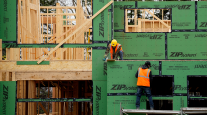Core Consumer Inflation Tops Projections in Broad Gain

[Stay on top of transportation news: Get TTNews in your inbox.]
A key measure of U.S. consumer prices rose more than forecast in June, potentially complicating the Federal Reserve’s assessment of inflation as policy makers weigh an interest-rate cut as soon as this month.
The core consumer price index, which excludes food and energy, rose 0.3% from the prior month, the most since January 2018, and 2.1% from a year earlier, Labor Department data showed July 11. Both figures exceeded estimates. The broader CPI climbed 0.1%, also more than projected, and 1.6% annually.
The report showed broad monthly gains in the core categories, including pickups in costs for shelter, used vehicles, clothing, and home furnishings and operations. U.S. stock futures dipped after the report while the yield on the 10-year Treasury rose.
The firmer inflation readings follow Fed Chairman Jerome Powell’s testimony to lawmakers July 10 that there’s “a risk that weak inflation will be even more persistent than we currently anticipate.” Also July 10, minutes of the June policy meeting showed officials judged uncertainties and risks to the economic outlook had increased significantly, strengthening the case for a rate cut at their July 30-31 meeting.
Inflation, measured by the Fed’s preferred gauge, was 1.5% in the year through May and has been below target for most of the past seven years, while the closely watched core index rose 1.6%. President Donald Trump, who along with aides has repeatedly pressured the Fed to cut rates to support growth, has also cited low inflation as a reason for easing.
The CPI report showed prices for used cars and trucks rose 1.6% from the prior month and 1.2% from a year earlier. Apparel, which has been volatile in recent months, rose 1.1% on the month while dropping 1.3% annually.
Shelter costs, which make up about a third of total CPI, rose 0.3% on the month, as did owners-equivalent rent, one of the categories that tracks rental prices. Rent of primary residence was up 0.4%.
A separate report from the Labor Department July 11 showed filings for unemployment benefits fell to the lowest level since mid-April, adding to signs of a robust job market.
Jobless claims dropped by 13,000 to 209,000 in the week ended July 6, below all estimates in a Bloomberg survey of economists that had projected 221,000. The reporting period included the July 4 holiday, which may add to the volatility of the readings.




